Iguazu / Tri-Border Paraguay, Brazil, Argentina: Part 1
ที่ตีพิมพ์: 12.02.2019
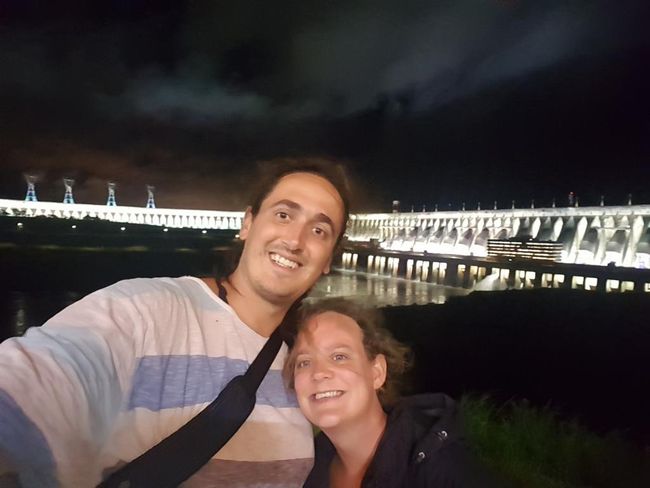
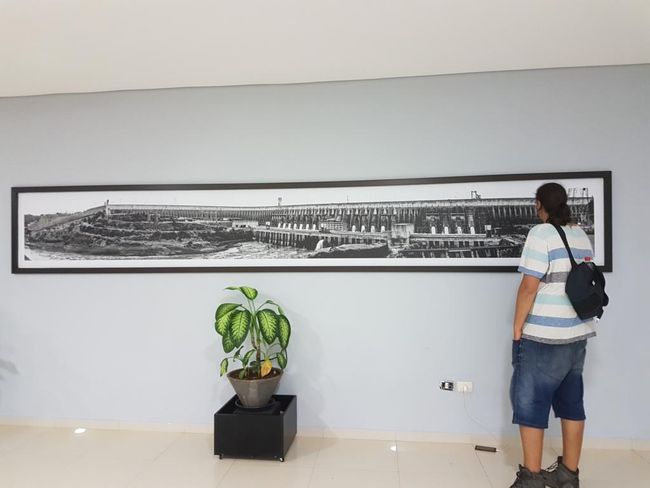
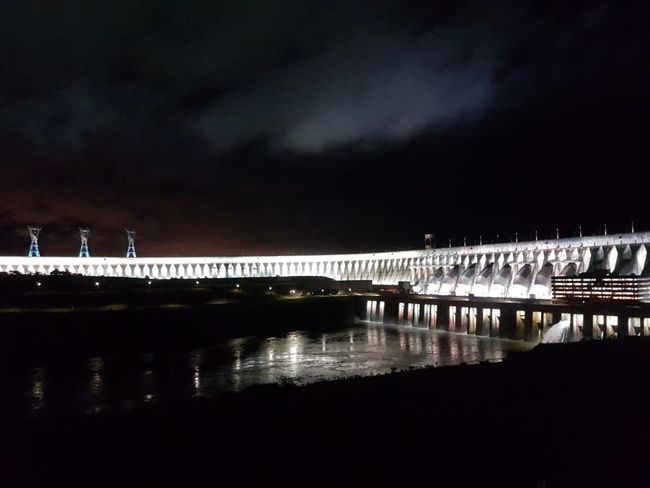
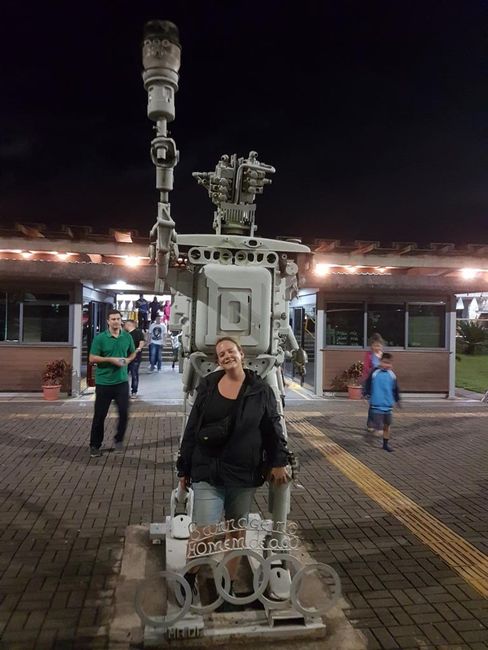
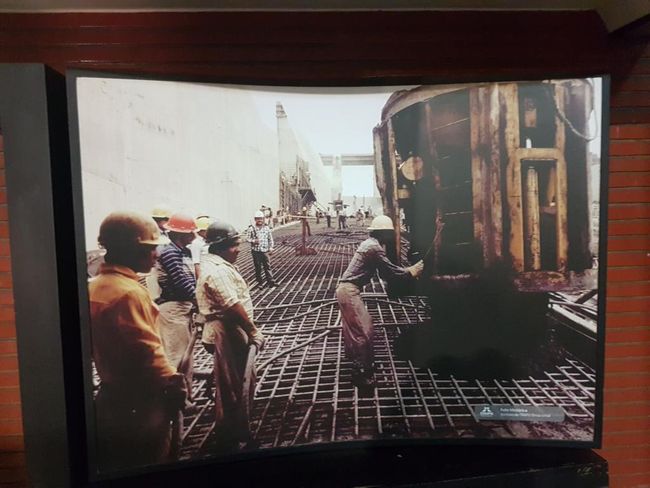
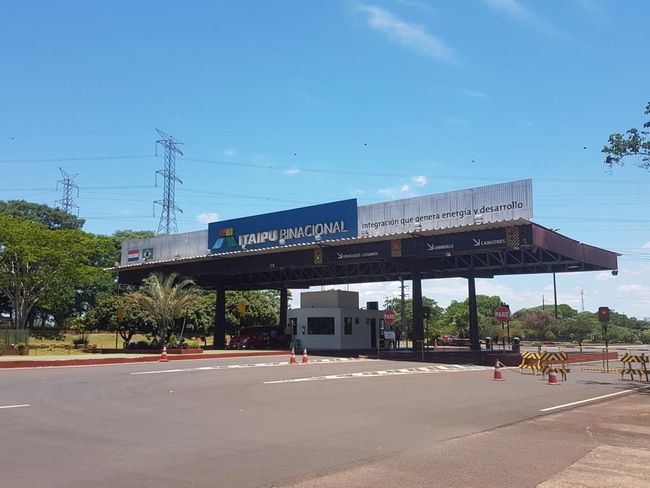
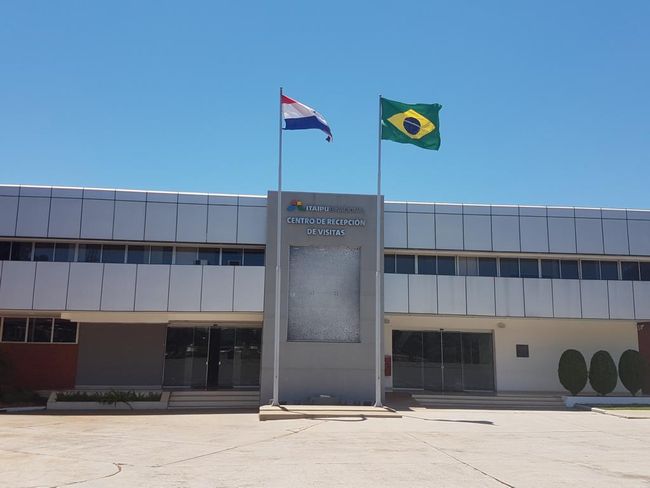
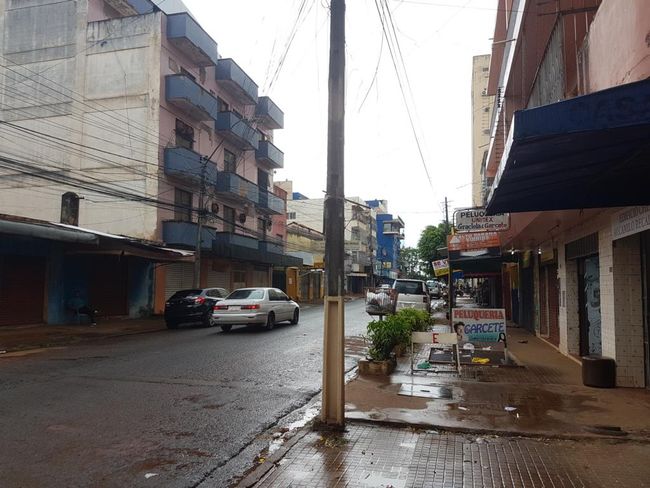

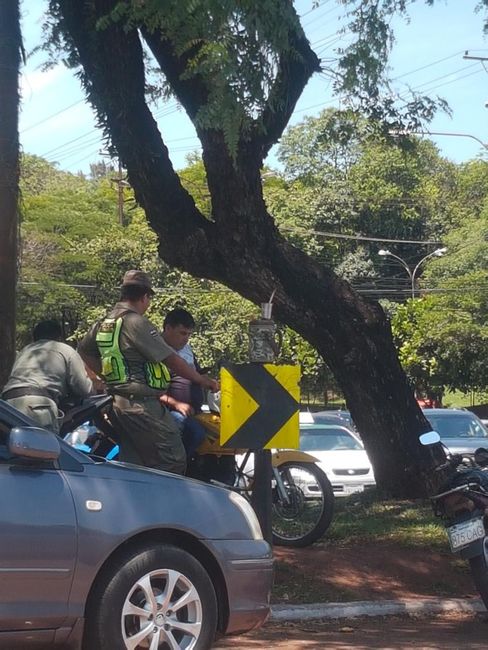
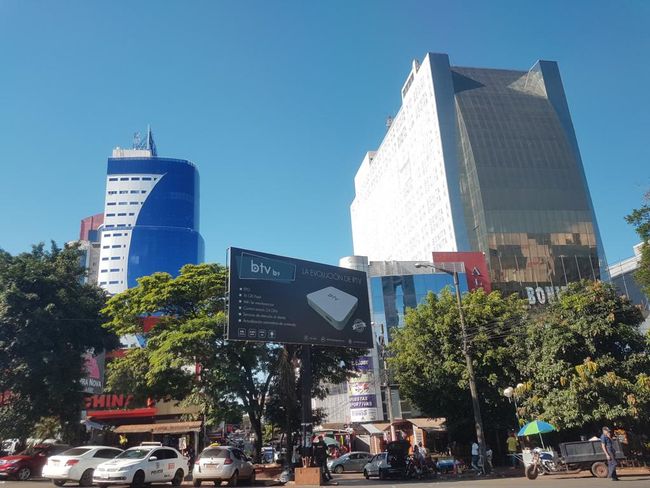
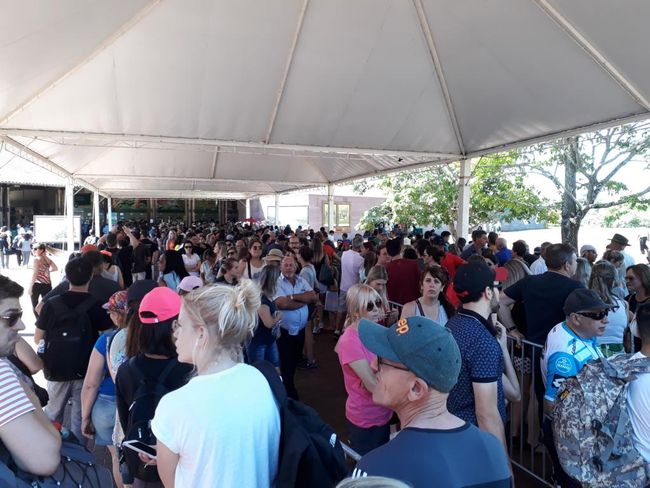
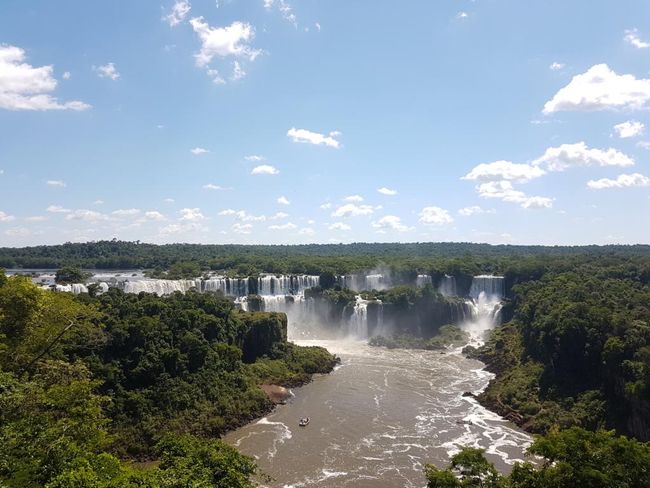
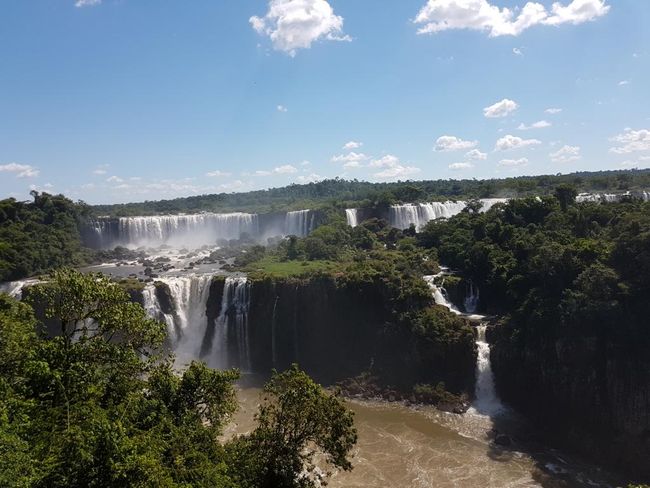
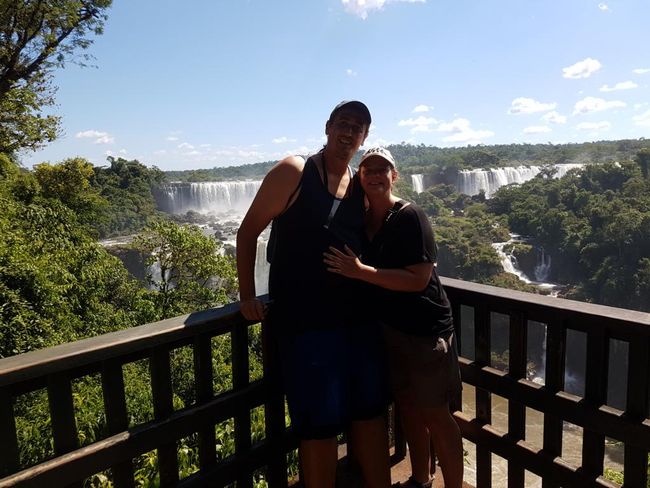

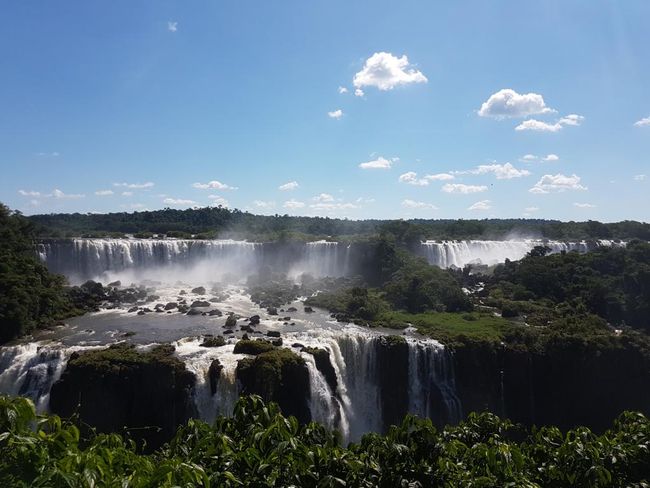
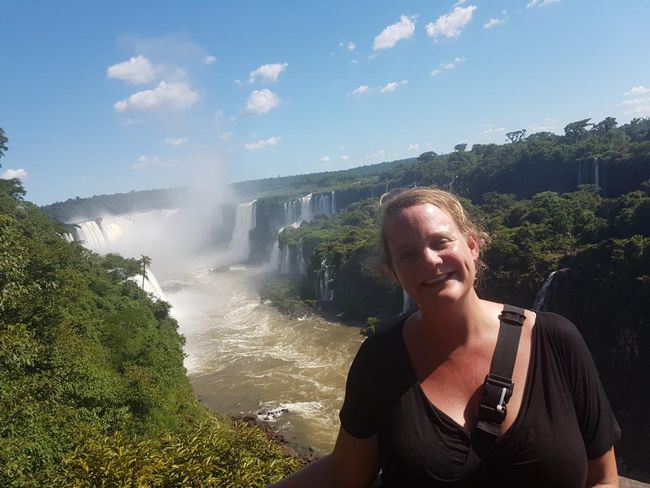

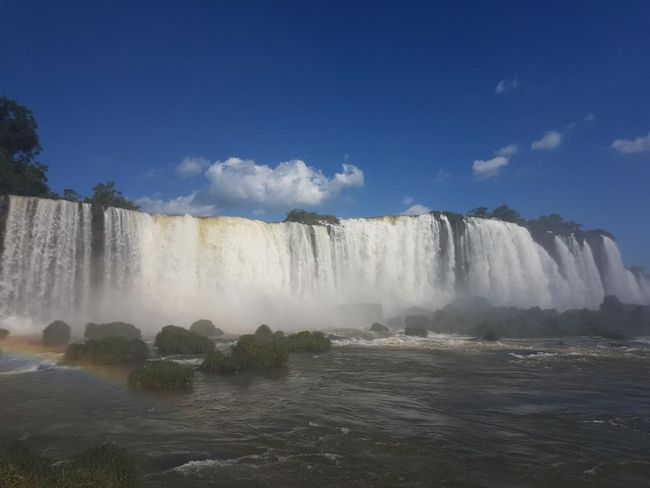
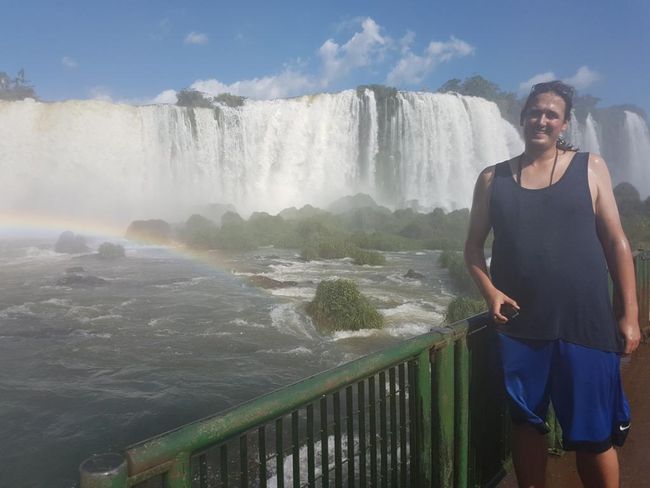
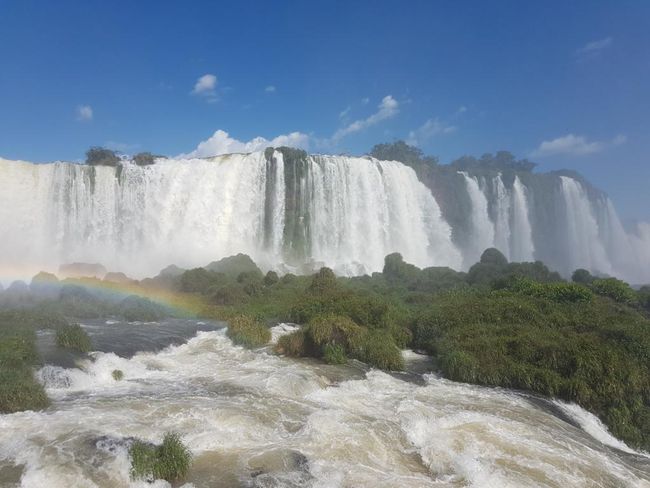
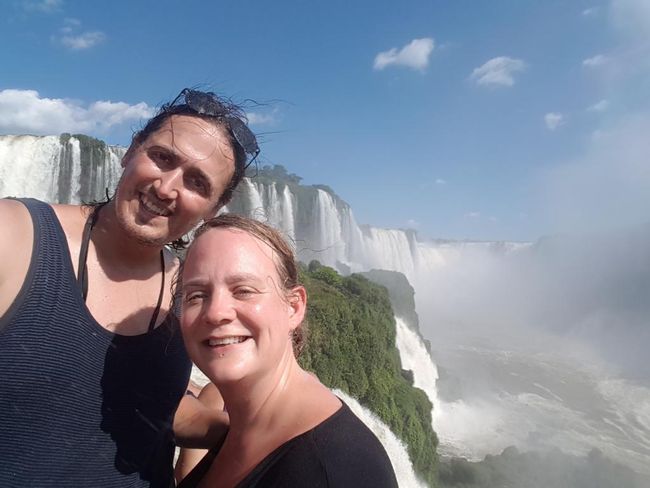
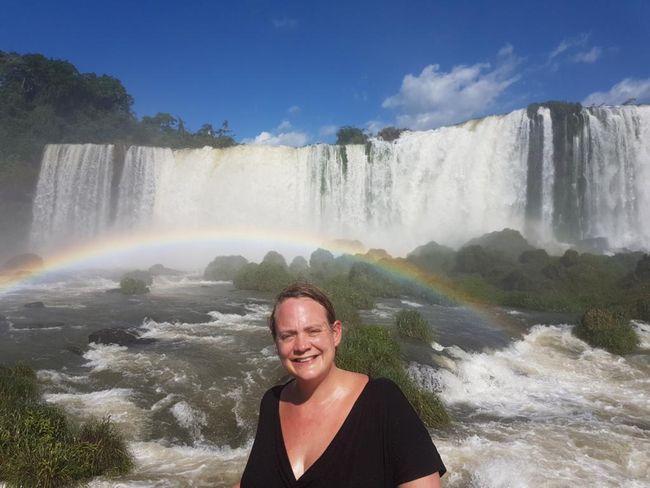
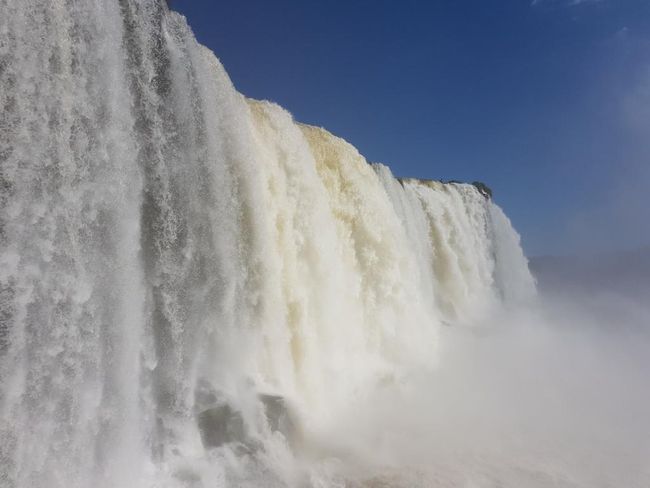
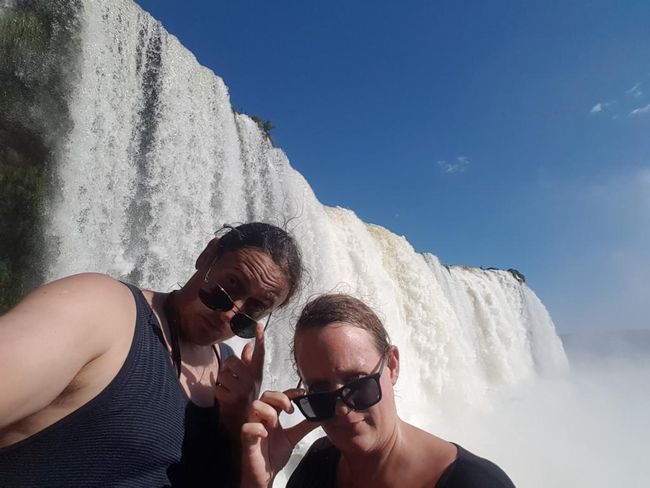
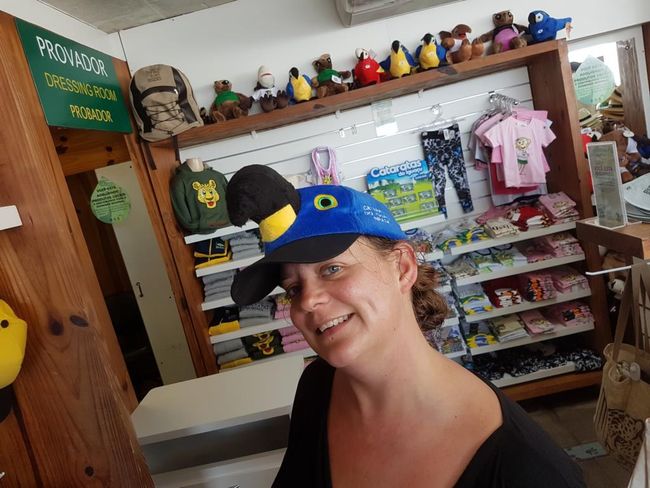
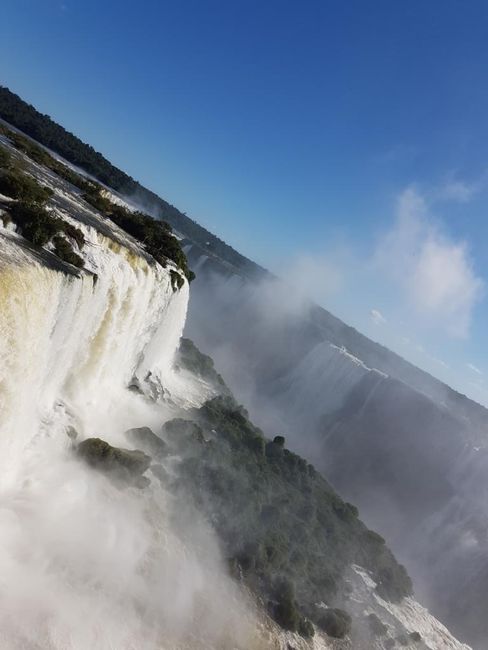
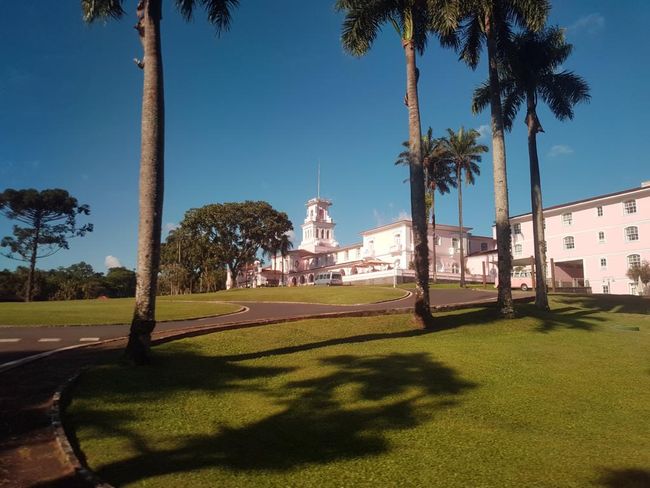
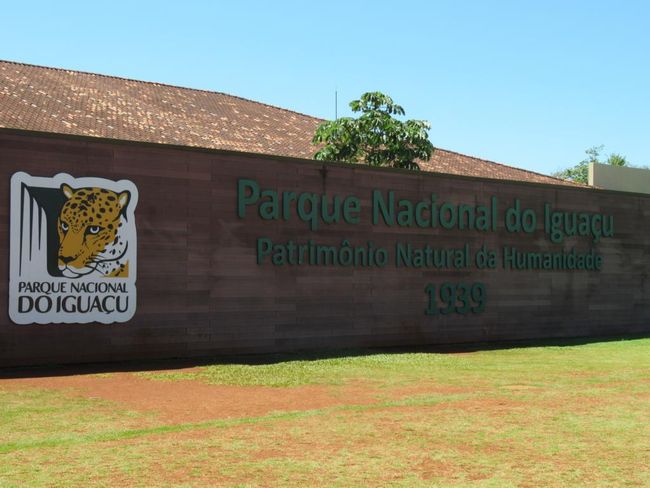
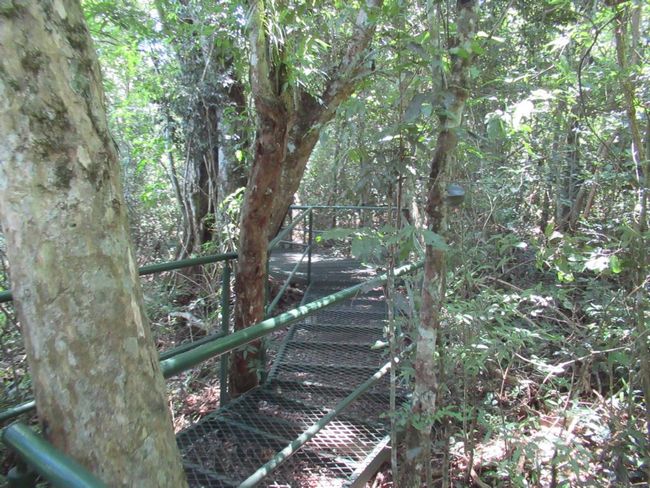
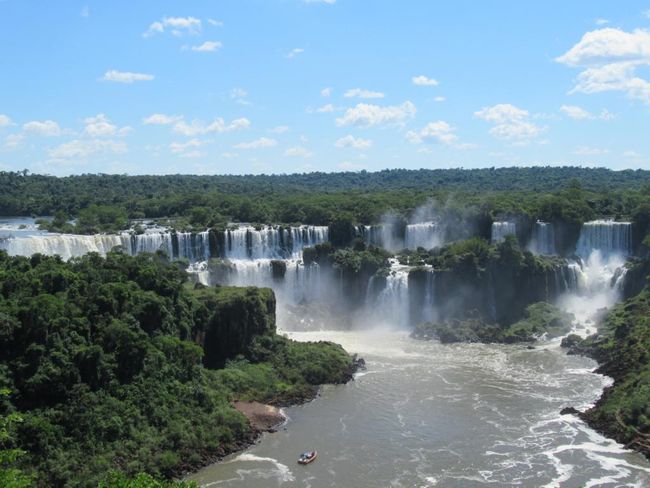
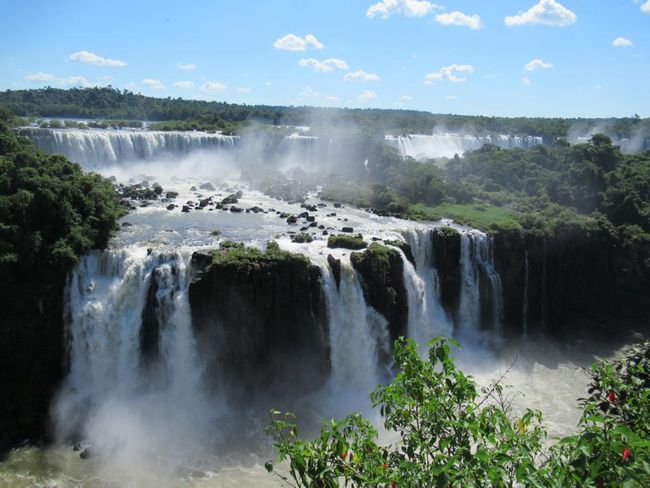
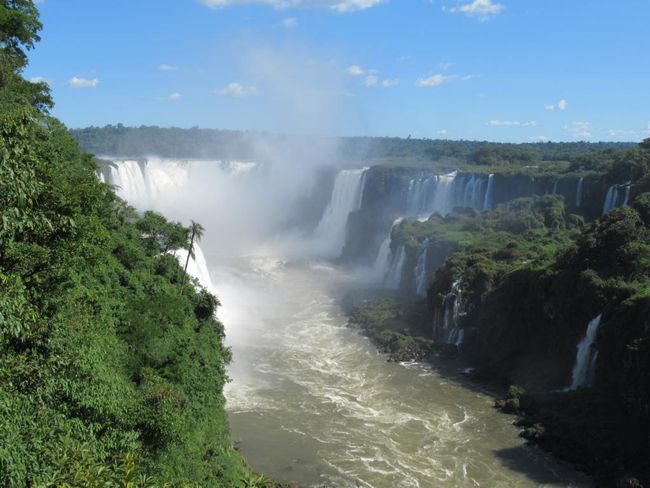
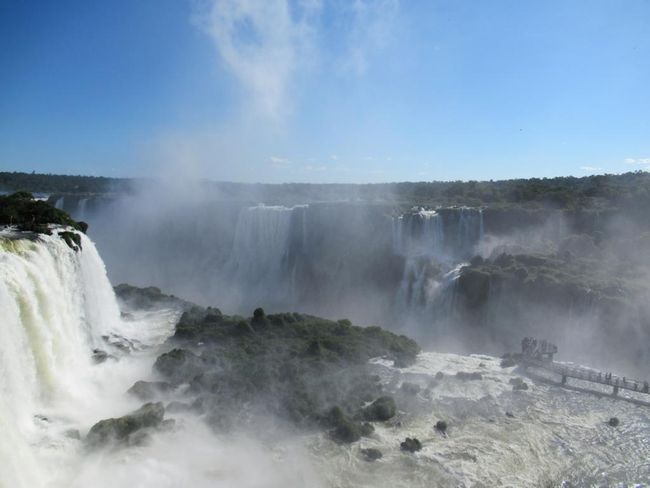
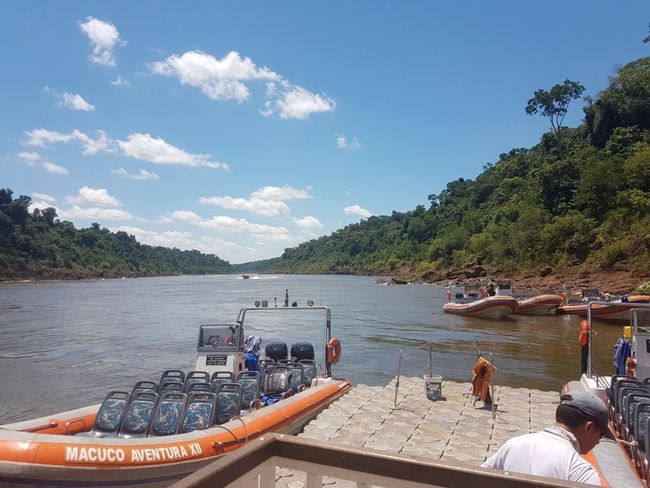
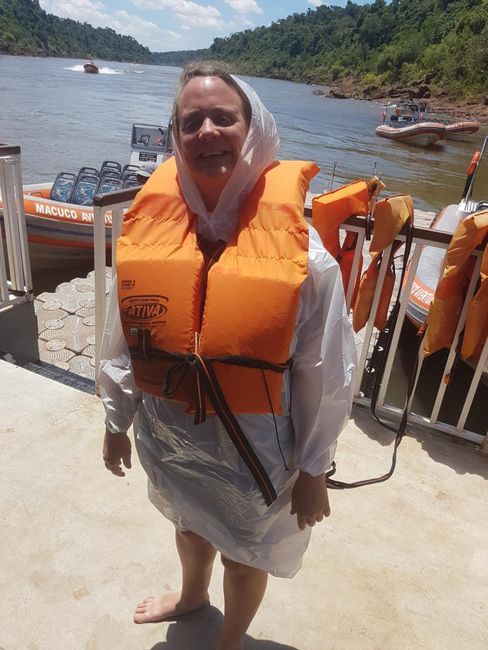

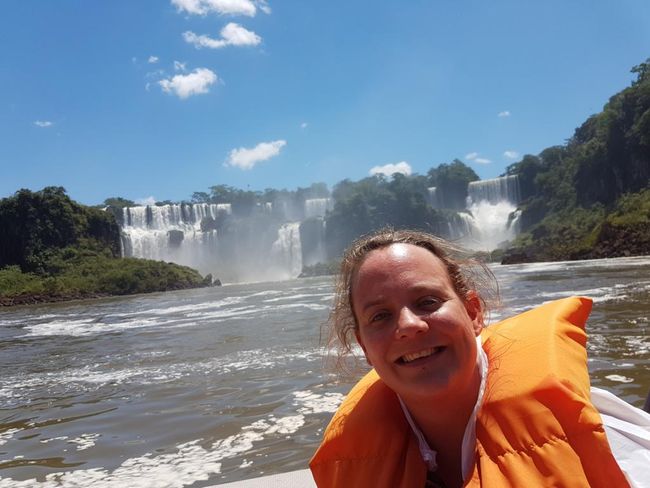
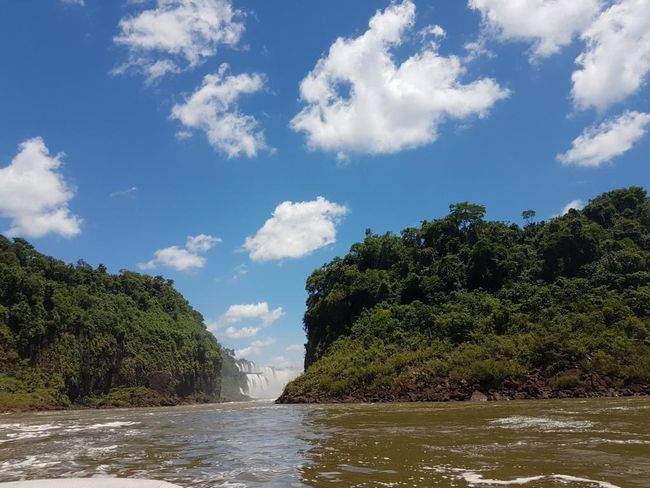
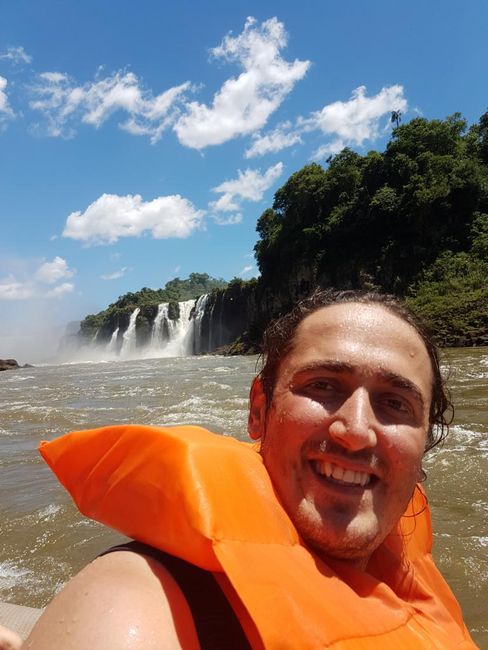
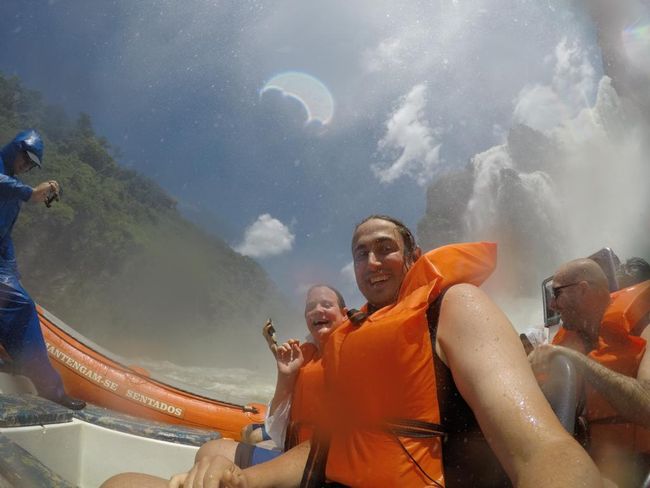
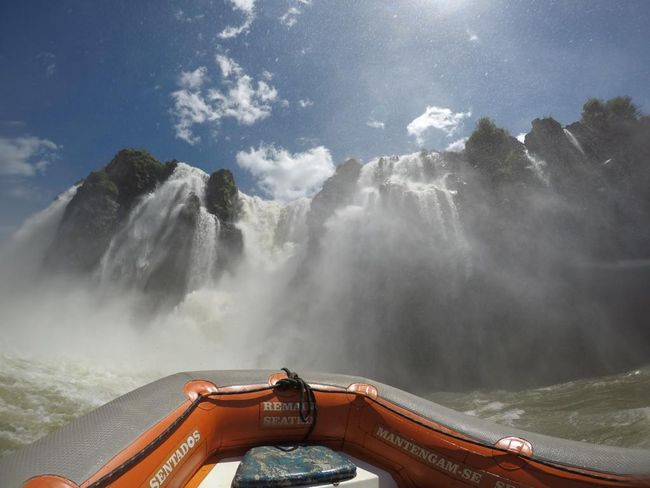
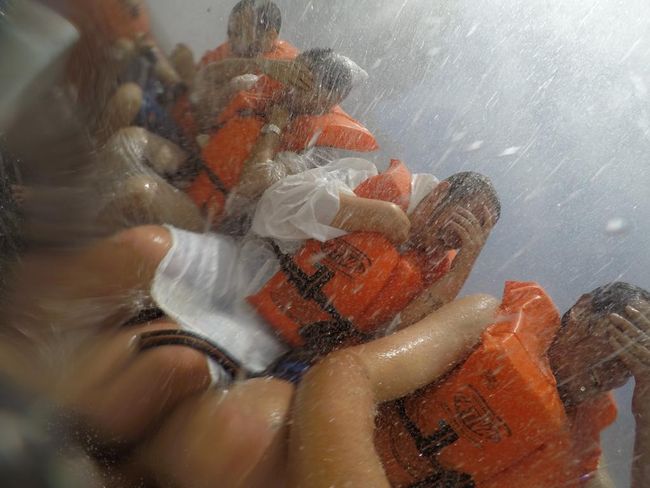
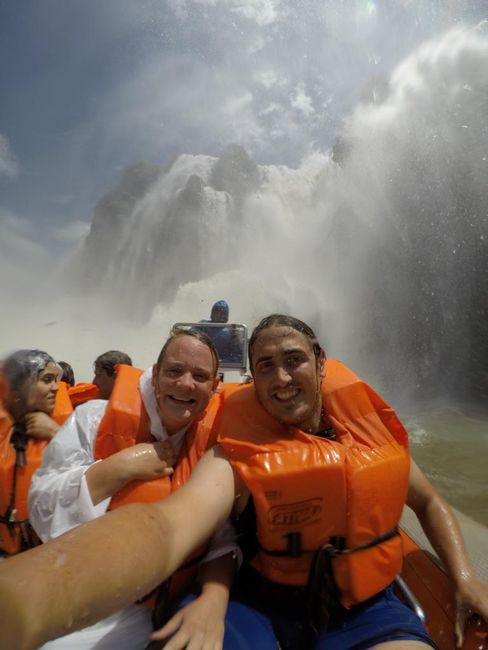
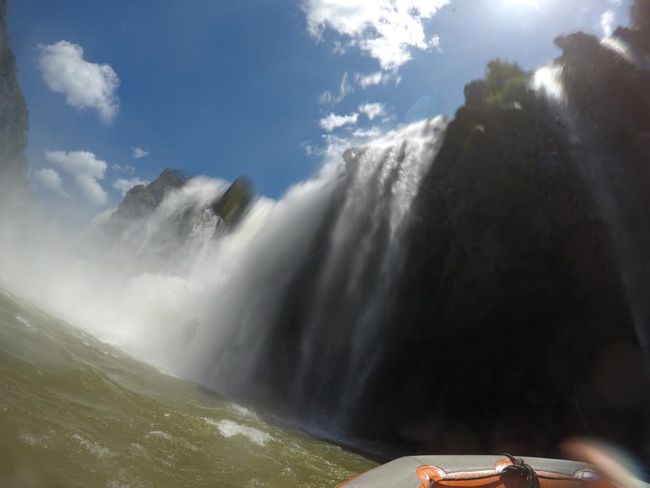
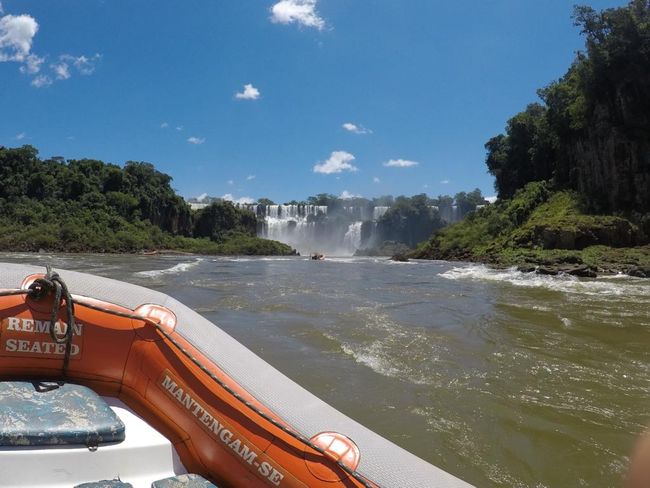
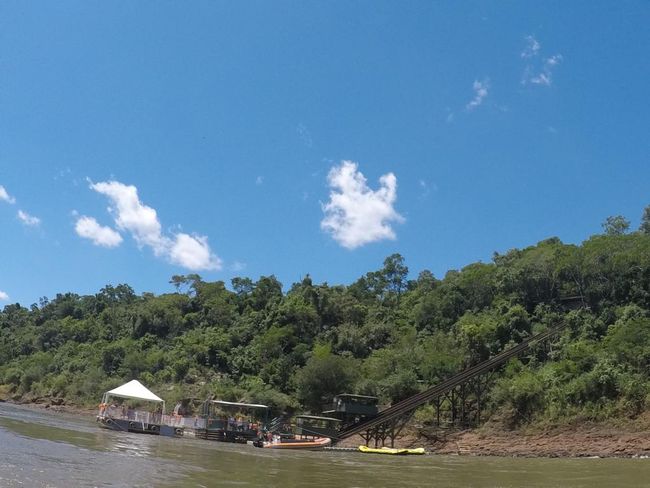
สมัครรับจดหมายข่าว
So we drove to Ciudad del Este, which is located at the tri-border area between Paraguay, Brazil, and Argentina. And thus the odyssey of passport stamps would begin.
First of all, it must be said that there is absolutely nothing to see in Ciudad del Este itself. The city is ugly and, in addition to an unbearable amount of border traffic, it is filled with shopping centers. This applies to the whole area in general. Even in Puerto Iguazu in Argentina, there is a huge duty-free market where we also stocked up on some packs of cigarettes for $9 each. The duty-free market was like an amusement park, with different areas decorated with sets, dolls, and LEDs. The chocolate section, for example, was designed like an Alpine village. Half of Europe was represented, with the Eiffel Tower from Paris and the Tower Bridge from London featured in the decorations. The entire tri-border area is considered a paradise for cross-border shopping. It's hard to figure out who exactly has the biggest advantages here. Everyone seems to be traveling everywhere to shop in large quantities. There are even "sightseeing trips" to Ciudad del Este, where you can buy cheap electronic devices, or to the duty-free mall where tons of alcohol, chocolate, and perfumes can be bought. There is also a huge casino just after the Argentine border, apparently gambling is not allowed everywhere among the neighbors.
Ciudad del
del Este has an important highlight to offer: the Itaipu Dam, Itaipu
means "singing stone" in the indigenous Guarani language.
The dam was constructed as a binational project between Paraguay and
Brazil. Until the opening of the Three Gorges Dam in China in 2006, it was
the largest hydroelectric power plant in the world since its completion
in 1991.
Due to the high utilization of the turbines, Itaipu still ranked first
in terms of annual energy production even after 2006.
Various tours can be taken through the dam. The
usual tour only includes a bus ride to the visitor center
to an observation deck, from where you have a beautiful panoramic view
of the dam. On Friday and Saturday evenings, a sound
and light show was offered. Coincidentally, we arrived on a Friday
and of course, booked such a tour for the evening. We took a taxi to the visitor center and when it started, we were also driven to the observation deck.
There, a 10-minute (advertising) video was shown about the
construction and performance of the power plant, mainly throwing
astronomical figures at you that you couldn't remember. The light show then started, but before you even realized it was starting, the whole thing was already over. With a little background music, lights
were gradually turned on until the whole dam was illuminated. That was it. Then there was another 5 minutes for taking pictures before we were
herded back onto the buses that returned to the entrance. I think the term
"sound and light show" is a bit exaggerated, but it was quite nice, the dam is really impressive to see, and at night it is definitely a
special sight.
The dam tours are offered on both
the Paraguayan and Brazilian sides. In addition to the panoramic tour, there is also a special tour offered on both sides, where you can go inside the dam and visit the control center. The main difference is that they are free in Paraguay, while you have to pay admission
in Brazil. However, Paraguay also offers a technical tour
that is not available in Brazil. For this, you have to register one week in advance and you "must" have a technical
background or be a student. Of course, I didn't want to miss this opportunity, so I booked such a tour in advance, but only for the following Monday. So we had to come back here after the weekend. Sounds simple?
We'll see.
Another coincidence was that it was a full moon this weekend. And
during a full moon, there is a full moon tour to Garganta del Diablo on
the Argentine side of the Iguazu Falls. I should mention that these waterfalls are the main reason why thousands of tourists visit this area every year.
The
Iguazu Falls consist of 20 major and 255 smaller
waterfalls over a length of 2.7 kilometers. Some are
up to 82 meters high, the majority are 64 meters high. The
Iguazu Falls are wider than Victoria Falls
and taller than Niagara Falls. The waterfall system known as Garganta del Diablo or "Devil's Throat"
is a U-shaped gorge that is 150 meters wide and
700 meters long. It runs along the border between Argentina and Brazil. The falls are separated from each other by several larger and smaller islands.
A few days ago, I read on the internet that there is a full moon tour on 5 days per month and of course, immediately got tickets for us. So we had to travel to Argentina first. This also made sense because we could bring all our luggage to Argentina, as we were going there anyway. However, there is no direct border between Paraguay and Argentina, so you have to travel through the Brazilian city of Foz do Iguacu. Locals can travel within a radius of 100 km in the 3 countries without having to go through immigration and customs procedures. Not so for foreigners. They have to go through all the border formalities every time. This means for a trip from Paraguay to Argentina: Departure from Paraguay - Entry to Brazil - Departure from Brazil - Entry to Argentina. This means a lot of stamps per border crossing, and due to our wild planning, there would be tons of stamps. We slowly started to worry that we wouldn't have enough free pages in our passports in the end. So the motto for the coming days was to save as much space in the passport as possible. Buses are also a bit of a challenge: there are international buses, but they don't always wait for you at the border while you are at immigration. That means you might have to wait up to 1 hour for the next bus after completing the formalities at the border. And there are not many buses that go directly between Argentina and Ciudad del Este without having to transfer in Brazil. Considering this, and also considering our mountain of luggage, not to mention the damn ceramic parrots, we decided to travel to Puerto Iguazu by taxi. The hotel called the same driver who had taken us to the dam the previous evening. He was kind of a crazy guy, friendly and nice, but also a bit crazy. The evening before, he accompanied us to the visitor center, shared Terere with us during the waiting time for the panoramic tour, and introduced us to all his acquaintances who sell souvenirs there. In between, you could feel that he was maybe a bit drunk, and his slightly intrusive manner was a bit tiring at times. Especially when he tried to take our passports to register us at the visitor center, that definitely went too far for me. However, the same crazy guy came to drive us to Argentina. But first, we went to a money changer, where he once again wanted our passports and our dollars to exchange them for us. As if! We'll do that ourselves, thank you very much. Then he also found that it wasn't really necessary to go through all the entries and exits, and he decided on the spot that we would just drive through Brazil, an illegal entry and exit so to speak. It worked out fine, it's also difficult to control that with the crazy border traffic between the 3 countries, so at least we saved 2 passport stamps.
In the afternoon, we strolled around Puerto Iguazu, inquired at the bus terminal about the buses to the waterfalls, and did the laundry.
In the evening, we waited on time for the special bus that took us to the entrance of the Argentine National Park. The full moon tour takes place on 5 days per month, 3 times per evening. We had booked tickets for the first tour, the others had already been fully booked. However, since it stays light longer at this time of year, it was still bright when we arrived at the entrance, so we were a bit skeptical. But it did get dark in time for us to reach Garganta del Diablo. To get to the Garganta, you take a small train. You can't see the other areas of the Argentine falls in the evening, you go directly to the final stop at Garganta del Diablo and then back to the exit.
From the train station to the waterfall, it's a good 15-minute walk along a metal walkway. When we finally reached the waterfall, the moon had indeed risen and illuminated the absolutely gigantic waterfall in a mystical and magical way. It was beautiful to look at. Unfortunately, it was hardly possible to take decent photos with our cameras, but there was a photographer on site who took nice photos of the people for a fee.
What we really underestimated was the water. The cascading gushing water causes a real rain, which, depending on the wind, blows directly onto the viewing platform. Within minutes, you were completely soaked from head to toe, and since it was evening, it was also quite cool. At least I had brought my rain jacket with me, which didn't hold up for long against the relentless spray, but it was still better than nothing. Jörg, as usual, thought he didn't need one, and so he was completely soaked to the bones when we headed back to the train station.
For the next day, we had planned to visit the Brazilian side of the Iguazu Falls. It was a Sunday: bad idea. From Puerto Iguazu, there is a tourist bus that goes directly to the visitor center, which waits for you at the border while you complete the immigration and customs procedures. This time, we entered Brazil legally again.
Already when we reached the entrance, we were amazed at the crowds of visitors. At that point, we still thought it would still be quick despite that. What a mistake. We had read beforehand that the Brazilian park is much smaller than the Argentine one and requires much less time for a visit. Therefore, we decided to take a boat ride on the Brazilian side, since we were already here. While Jörg stood in line, I went to buy the boat tour tickets. And there it happened, the typical fatal mistake at such a tri-border area: I bought the tickets and was surprised that the boat tour was actually quite cheap. Until it dawned on me at some point that I had mixed up the exchange rate. I had calculated with the Argentine rate instead of the Brazilian one, which amounts to a factor of about 10. So the boat tour cost around 10 times more than I thought, and was by no means cheap, quite the opposite. Well, it didn't matter anyway, I already had the tickets and we wanted to do the boat tour anyway, it wouldn't have been much cheaper on the Argentine side either. I returned to Jörg, who hadn't made much progress in the line. And mind you, this was the line to enter the park, we had already
fortunately purchased the entrance tickets online beforehand. Jörg had in the meantime struck up a conversation with a Swiss couple who were on vacation here. At least that provided some entertainment during the long wait time.
In the Brazilian park, you board a bus directly at the entrance, which takes you through the park. Along the way, you can get off and back on at various attractions, which you have to pay extra for. The last stop is at the Panorama Walkway. And it is precisely this bus that is the bottleneck, especially with such a large number of visitors. We ended up waiting for about 2.5 hours before we could finally get on one of the buses. Originally, we had planned to go to the walkway first and then do the boat tour on the way back. But since it was already getting quite late, we decided to reverse the order. After all, the boat tour was very expensive, so it had priority. If we couldn't do the walkway anymore, we could just come back another day.
So we got off the bus at the corresponding stop and said goodbye to the Swiss couple. The boat tour starts with a ride through the jungle and a short hike. And wonder of wonders, we were once again in Brazil, no one spoke Spanish or English. So we didn't understand most of the few explanations about the flora and fauna during the "hike", but it was probably not particularly thrilling anyway. When we arrived at the boat dock, we were asked "Wet" or "Dry". Those were absolutely the only words that the staff knew in a foreign language, but still. The boat tour can be done in the "wet" version, meaning the boat goes into a small waterfall, so you really get soaked. The "dry" alternative is more of a panoramic boat ride at the foot of the waterfalls. Of course, we opted for the wet version, because fun is a must. I (and also several others) had the absolutely idiotic idea that a rain poncho might prevent the worst. It couldn't. In the end, I was completely wet, so the poncho offered for purchase is definitely useless. The bathing suit would have been the better choice. All in all, the boat tour was really fun. First, like the panoramic tour, we drove along the base of a group of waterfalls, so you can take some really nice photos from a different perspective. Then we headed towards a small waterfall...and into it...several times, the driver steered the inflatable boat directly into the waterfall. The force of the cascading water was very impressive, you could hardly breathe or keep your eyes open. So you didn't see much in the whole process, but you definitely felt it. And experiencing this force of nature was absolutely fascinating. Besides, plenty of adrenaline is released, so you return to the boat dock in a good mood. And luckily it was hot, so you dried off quickly.
Afterwards, we waited for the next bus that took us to the starting point of the Panorama Walkway. Right at the bus stop, there is already the first viewpoint, from where you have an absolutely breathtaking view of the Iguazu Falls. Right there, there is also a hotel, a really chic and expensive one, the Belmond Hotel, which looks like a pink castle. The overnight stay in a double room costs about $500 per night, but I would still recommend it to anyone who visits the falls and can afford it, to spend a night there. Of course, that wasn't possible for us as long-term travelers, but if I ever come back here and can expect a salary at the end of the month, I would definitely stay there. Because guests have unlimited access to the walkway, so you can find a nice spot to enjoy the waterfalls early in the morning or in the evening, without the crowds from during the day.
Most of the waterfalls are on the Argentine side, so you have a better panoramic view from Brazil. However, the Brazilian park only offers a circular walkway, so you go through it relatively quickly. But along the way, you are treated to truly breathtaking views. You have to be careful of the cute but cheeky coatis, who will snatch food right out of your hand if you're not careful. And although there are signs everywhere not to feed the animals, many people still do it.
When we left the park in the evening, it was already late and the last bus that goes directly to Puerto Iguazu had already left. What a bummer. We inquired about the best way to return to Argentina and ended up boarding a bus that would let us get off at a stop in Foz do Iguacu, where we could transfer to another bus. Done. The driver stopped at the designated bus stop and we got off. But unfortunately, no bus came. We waited for what felt like an eternity, several buses passed by, but none of them stopped. That was just driving us crazy. Eventually, we gave up and grabbed a taxi.
สมัครรับจดหมายข่าว
คำตอบ
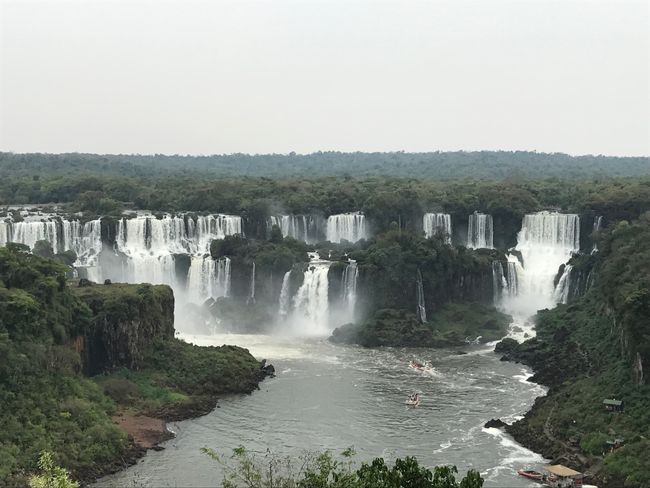
รายงานการเดินทาง ประเทศปารากวัย

